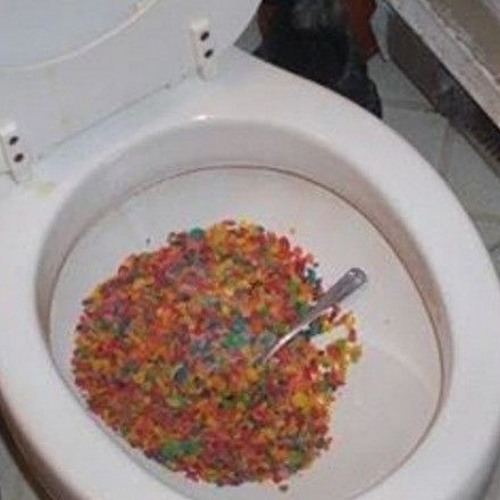Is it Sensible to Dispose of Food in the Toilet?
Is it Sensible to Dispose of Food in the Toilet?
Blog Article
The article author is making a number of good pointers on the subject of Flushing Food Down the Toilet? as a whole in this content directly below.

Intro
Many individuals are usually faced with the dilemma of what to do with food waste, specifically when it involves leftovers or scraps. One common inquiry that arises is whether it's alright to purge food down the bathroom. In this post, we'll delve into the reasons why people could take into consideration flushing food, the consequences of doing so, and alternate techniques for correct disposal.
Reasons people could consider flushing food
Lack of understanding
Some people might not know the prospective damage brought on by purging food down the commode. They might erroneously think that it's a safe method.
Comfort
Purging food down the bathroom might feel like a fast and very easy service to throwing away unwanted scraps, particularly when there's no nearby trash bin available.
Idleness
In some cases, people might merely pick to flush food out of sheer idleness, without thinking about the repercussions of their activities.
Consequences of flushing food down the toilet
Ecological influence
Food waste that ends up in waterways can contribute to contamination and harm marine ecological communities. Furthermore, the water used to flush food can strain water resources.
Plumbing problems
Flushing food can cause clogged pipelines and drains, causing costly plumbing repair work and aggravations.
Sorts of food that need to not be flushed
Fibrous foods
Foods with coarse structures such as celery or corn husks can get tangled in pipelines and trigger clogs.
Starchy foods
Starchy foods like pasta and rice can soak up water and swell, bring about obstructions in pipelines.
Oils and fats
Greasy foods like bacon or cooking oils should never ever be purged down the bathroom as they can solidify and trigger clogs.
Proper disposal approaches for food waste
Making use of a garbage disposal
For homes furnished with waste disposal unit, food scraps can be ground up and flushed via the plumbing system. Nevertheless, not all foods appropriate for disposal in this way.
Recycling
Particular food packaging products can be recycled, lowering waste and reducing ecological effect.
Composting
Composting is an environment-friendly means to get rid of food waste. Organic materials can be composted and made use of to enrich dirt for gardening.
The value of proper waste monitoring
Minimizing environmental injury
Proper waste monitoring practices, such as composting and recycling, assistance reduce air pollution and preserve natural resources for future generations.
Protecting plumbing systems
By staying clear of the practice of flushing food down the bathroom, house owners can protect against expensive pipes repair work and maintain the stability of their plumbing systems.
Final thought
To conclude, while it may be tempting to purge food down the bathroom for comfort, it is very important to comprehend the potential effects of this activity. By adopting appropriate waste administration techniques and throwing away food waste properly, people can contribute to healthier plumbing systems and a cleaner atmosphere for all.
FLUSH FOOD DOWN THE TOILET?
FLUSHING FOOD CAN CAUSE BLOCKED DRAINS IN YOUR HOME
All of the plumbing fixtures in your home are connected to the same sewer pipe outside of your home. This outdoor sewer pipe is responsible for transporting all the wastewater from your home to the Council sewer mains. Even small pieces of food that go down the kitchen sink can cause problems for your sewer. It should therefore be obvious that flushing larger bits of food, such as meat, risks a clog in either the toilet itself or the sewer pipes. Flushing greasy food is even more problematic because oil coagulates when it cools, coating the interior lining of your pipes.
THE TOILET IS NOT A BIN
Food isn’t the only thing that people shouldn’t be flushing down the toilet. People use the toilet to dispose of all kinds of things such as tampons, makeup wipes, dental floss, kitty litter and even underwear. Water goes to great lengths to educate residents about the high costs and stress placed on wastewater treatment systems simply from people flushing the wrong stuff down the toilet. It costs taxpayers millions of dollars each year, and homeowners thousands in blocked drain repairs.
FLUSHING FOOD IS A WASTE OF WATER
Flushing food is a waste of our most precious resource - water. In June this year Level 1 water restrictions were introduced to protect water supply from drought conditions. Much of New South Wales continues to be affected by prolonged drought with recent figures revealing up to 97 per cent of the state remains in drought. Depending on whether you have a single or dual flush toilet, every single flush uses between five and 11 litres of water. In the current climate this is a huge amount of water to be wasting on flushing food that should be placed in the bin (or better yet, the compost).
https://www.jabplumbingsolutions.com.au/blog/can-you-flush-food-down-the-toilet

I recently found that content about Flushing Food Down the Toilet? when doing a search on the web. I beg you pause to share this blog if you enjoyed reading it. Kudos for your time. Kindly pay a visit to our site back soon.
Book Today Report this page